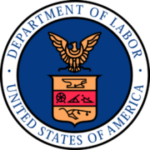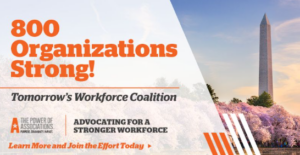IHMM Government Affairs
Advocacy seeks to ensure that all people in society are able to have their voices heard on issues that are important to them.
Our advocacy seeks to protect and promote our rights as citizens. Advocacy ensures that we have our views
and wishes genuinely considered when decisions are being made about our lives.
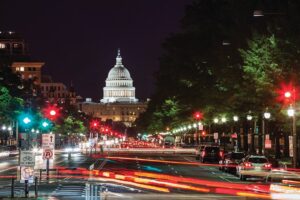
IHMM Federal Issues – Pending Actions With Deadlines
In this section you will find the federal issues on which IHMM has interests and the comment periods are still open with deadlines.

PHMSA’s ANPRM: Mandatory Regulatory Reviews – IHMM Seeks Certificant Input
Deadline: July 31, 2025
On June 4, 2025, the Department of Transportation (DOT) issued an Advance Notice of Proposed Rulemaking (ANPRM) – Hazardous Materials: Mandatory Regulatory Reviews to Unleash American Energy and Improve Government Efficiency.
Summary: PHMSA is publishing this advance notice of proposed rulemaking (ANPRM) to solicit stakeholder feedback on whether to repeal or amend any requirements in the Hazardous Materials Rulemaking Procedures and Program Procedures, or the Hazardous Materials Regulations to eliminate undue burdens on the identification, development, and use of domestic energy resources and to improve government efficiency.
This ANPRM supports opportunities to identify widely used hazardous material special permits with established safety records for conversion into deregulatory provisions with broader applicability.
IHMM invites its certificates to review the USDOT/PHMSA/ANPRM here > https://ihmm.org/wp-content/uploads/2025/06/USDOT-PHMSA-Reg-Review-FR.pdf
Then consider submitting comments to IHMM using the IHMM Comment Collection Form > https://forms.gle/vTVz2ZFurT2PnwCJA
Deadline is July 31, 2025

USDOL – OSHA – Amending the Medical Evaluation Requirements in the Respiratory Protection Standard for Certain Types of Respirators
Deadline: September 2, 2025
The U.S. Department of Labor/ posted a notice on July 1, 2025, concerning amendments to the Medical Evaluation Requirements in the Respiratory Protection Standard for Certain Types of Respirators. The Federal Register notice for which is here.

USDOL – OSHA – Interpretation of the General Duty Clause: Limitation for Inherently Risky Professional Activities
Deadline: September 2, 2025
The U.S. Department of Labor/ posted a notice on July 1, 2025, concerning Interpretation of the General Duty Clause: Limitation for Inherently Risky Professional Activities the Federal Register notice for which is here.

USDOL – OSHA – Rescission of Coordinated Enforcement Regulations
Deadline: September 2, 2025
The Department of Labor (the Department or DOL) proposes to remove the regulations that set forth the procedures within the Department for the coordination of enforcement activities by the Wage and Hour Division (WHD), the Occupational Safety and Health Administration (OSHA), and the Employment and Training Administration (ETA) relating to migrant farmworkers. The Department is proposing this removal because these regulations limit the Department’s discretion, impose unnecessary and duplicative internal procedures, and prevent the Department’s agencies from coordinating with regard to migrant farmworkers in more efficient, effective ways. The Federal Register notice is here.

USDOL – OSHA – Construction Illumination Standards
Deadline: September 2, 2025
OSHA is seeking comment on fully rescinding the construction illumination rules found in 29 CFR 1926.26 and 1926.56, citing that current lighting standards are “not reasonably necessary” to reduce significant risk. The Federal Register notice is here.

Tomorrow’s Workforce Coalition Legislation Signed Into Law
After modifications in the Senate to win over Sen. Murkowski (R-AK) and the removal of a few provisions deemed invalid by the Parliamentarian, the Senate passed their version of H.R. 1: To provide for reconciliation pursuant to title II of H. Con. Res. 14 on Tuesday, July 1, 2025. The House then passed the Senate-amended version of HR 1 on Thursday, July 3, 2025.
The President signed that legislation into law on Friday, July 4, 2025.
Here is a link to the legislation and a breakdown of each section in the bill.
Last December 2024, we had two objectives in becoming a part of the Tomorrow’s Workforce Coalition and the Community Impact Coalition.
- Pass HR 1151 and S 756 concerning the modification of the permissible uses of IRS 529 plans, allowing for them to be used for certain expenses relating to certification expenses; and
- Prevent Congress from expanding federal taxes on non-profit corporations.
We achieved both objectives.
We had the opportunity to have HR 1151 and S 756 language incorporated into HR 1; we took that opportunity as it appeared HR 1 was going to pass, which it did. Having passed HR 1, we no longer need HR 1151 and S 756.
HR 1 Section 110111 contains the language we sought [page 800]
Next Steps
- Tomorrow’s Workforce Coalition will work with the IRS regulations that will be promulgated pursuant to this change in the 529 statute.
- Community Impact Coalition should cease to exist as the objective for which it was created has been achieved.
H.R. 1151 has 195 co-sponsors in the House. S 756 has 16 co-sponsors in the Senate.
H.R. 1151 / S 756 / Coalition Roster
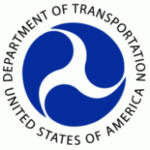
IHMM Files Comments – US DOT Regulatory Information Request
Deadline: May 5, 2025
The U.S. Department of Transportation issued a Federal Register notice published today [attached] asking interested parties questions concerning DOT regulatory activities and information gathering. DOT seeks input on these activities from the public.
IHMM has filed comments on this Regulatory Information Request from the DOT HERE
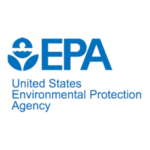
EPA Extends Comment Period On Draft TSCA Risk Evaluation For DCHP
Deadline: May 9, 2025
On March 13, 2025, EPA extended the comment period on the draft risk evaluation for dicyclohexyl phthalate (DCHP) under TSCA. 90 Fed. Reg. 11966. EPA released the risk evaluation for DCHP on January 7, 2025, with a comment period that closed March 10, 2025.
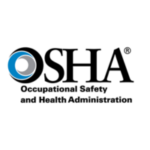
IHMM Submits Comments on the OSHA Proposed Heat Rule
OSHA Hearing Scheduled for June 16, 2025 at 9.30 am EDT.
Read IHMM’s Comments Here Filed 1-13-2025
OSHA will hold an informal public hearing on its proposed Heat Injury and Illness Prevention rule on June 16, 2025, at 9:30 a.m. EDT. The hearing will be virtual, and if necessary, will continue on subsequent weekdays.
The Occupational Safety and Health Administration (OSHA) has released a proposed rule that would protect approximately 36 million workers in indoor and outdoor work settings from extreme heat. The proposed rule would require employers to develop an injury and illness prevention plan to control heat hazards in workplaces with excessive heat. The plan would require employers to evaluate heat risks and — when heat increases risks to workers — implement requirements for drinking water, rest breaks, and control of indoor heat. It would also require a plan to protect new or returning workers unaccustomed to working in high-heat conditions.
IHMM initiated collecting comments from its Government Affairs Committee, CSHMs, CSMPs, CHMMs, and CSMPs concerning this proposed regulation and filed the comments linked above on January 13, 2025.
As always, the initial portion of the IHMM comments discusses the strengths of its credentials and those who hold them, the required professional development that leads to recertification every five years, and the education and training provided to our credential holders through our Foundation.

EPA Extends Deadline For Reporting Health And Safety Data For 16 Chemicals
Deadline: June 11 and September 9, 2025
On March 13, 2025, EPA extended the reporting deadline for a rule under TSCA Section 8(d) requiring manufacturers (including importers) of 16 chemicals to report data from unpublished health and safety studies to EPA. The rule applies to manufacturers in the North American Industrial Classification System (NAICS) codes for chemical manufacturing (NAICS code 325) and petroleum refineries (NAICS code 324110) that are currently manufacturing (including importing) a listed chemical substance (or will do so during the chemical’s reporting period), or that have manufactured (including imported) or proposed to manufacture (including import) a listed chemical substance within the last ten years. EPA states that the health and safety studies will help inform EPA’s prioritization, risk evaluation, and risk management of chemicals under TSCA. EPA extended the reporting deadline to June 11, 2025, for vinyl chloride, and to September 9, 2025, for the other chemicals covered under the rule:
- 4,4-Methylene bis(2-chloraniline);
- 4-tert-octylphenol(4-(1,1,3,3-Tetramethylbutyl)-phenol);
- Acetaldehyde;
- Acrylonitrile;
- Benzenamine;
- Benzene;
- Bisphenol A (BPA);
- Ethylbenzene;
- Naphthalene;
- Styrene;
- Tribromomethane (bromoform);
- Triglycidyl isocyanurate;
- Hydrogen fluoride;
- N-(1,3-Dimethylbutyl)-N′-phenyl-p-phenylenediamine (6PPD); and
- 2-anilino-5-[(4-methylpentan-2-yl) amino]cyclohexa-2,5-diene-1,4-dione (6PPD-quinone).

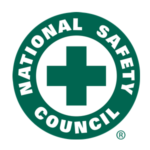
IHMM, NSC Coalition Letter to Congressional Appropriators – OSHA FY2026
Each year, with input from several associated stakeholders, including IHMM, the National Safety Council develops an occupational safety and health congressional appropriations letter for organizations to sign. Given the state of play, this year’s letter focuses on OSHA funding at the FY25 level ($655.5 million) and the restoration of critical NIOSH programs. The letter is attached.
IHMM NSC Coalition Letter to Congressional Appropriators

IHMM, 460 Organizations Fight for Funding NIOSH – Friends of NIOSH
IHMM is part of a 460-organization coalition seeking to inform congressional appropriators about the importance of NIOSH funding. This is the time of year when Congressional appropriations committees begin deliberating on the FY2025 budget cycle and writing appropriations bills. Given recent actions in Washington, we crafted a communication to help them understand the need to fund NIOSH adequately.
Friends of NIOSH Coalition Letter Here

IHMM and SWANA Join In a Statement on End-Of-Life Management
IHMM has joined the Solid Waste Association of North America [SWANA] to raise awareness of the need for safety and responsible end-of-life management of hazardous products. As described in the press release, the waste and resource management industry is struggling with the frequent fires and explosions caused by batteries, marine flares, compressed gas cylinders, and other products. The goal of the statement is to raise awareness about the need for safe handling of these items and to invite producers and policymakers to work with us on solutions for labeling, design, and responsible end-of-life management.
Read the updated 3/28/2025 statement here.

IHMM, ASSP, AIHA, NSC, ISEA, and Others in Coalition for OSHA Funding
IHMM is part of a 25-organization coalition seeking to inform congressional appropriators about the importance of OSHA funding. This is the time of year when Congressional appropriations committees begin deliberating on the FY2025 budget cycle and writing appropriations bills. Given recent actions in Washington, we got together to craft a communication to help them understand the need to adequately fund OSHA.
OSHA Coalition Letter Here

IHMM and the Intersociety Forum [ISF]
Driving Business Growth and Profitability
IHMM is a member of the Intersociety Forum, made up of organizations dedicated to the EHS professions and to communicating with policy makers about the critically important role that the EHS professionals play in our world.
Modern occupational environmental, health, and safety (EHS) practices are key to driving economic growth. This document, developed by the Intersociety Forum (ISF), a coalition of organizations dedicated to safeguarding worker safety and health, highlights the many ways safety practices create a strategic advantage that powers enduring business success while fostering innovation and protecting workers.
Despite advancements, workplace injury and fatality rates remain stagnant. By adopting proactive, risk-based safety strategies, businesses can unlock greater productivity, reduce costs, and strengthen their global competitiveness. We urge today’s business leaders and policymakers to prioritize occupational EHS as a foundation of economic competitiveness. Adopting this approach will position the U.S. as a global leader in safety, innovation, and workforce well-being, enabling workers and businesses to thrive. Driving Business Growth and Profitability.
Here is the “Driving Business Growth and Profitability Through Modern Occupational Environmental, Health and Safety Practices” document.
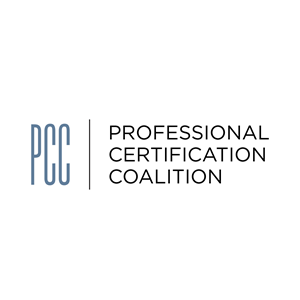
Professional Certification Coalition
Congress has started working and among our priorities is the Freedom to Invest in Tomorrow’s Workforce Act that we started in the last Congress. This legislation would allow IRS 529 plans to use proceeds for certain certification-related expenses. We expect that bill to be introduced the first week of February, and we have also received strong signals that the legislation will be in the coming reconciliation package. Very hopeful signs.
IHMM is a member of the PCC. The PCC monitors state and federal legislative and regulatory activity affecting professional certification on an ongoing basis.
IHMM participated in the March 5, 2025, Member Meeting and Capitol Hill Advocacy Day.
2025 State Legislatures are underway and our first 2025 Watch List is below:
New 2025 State Legislation Watch List
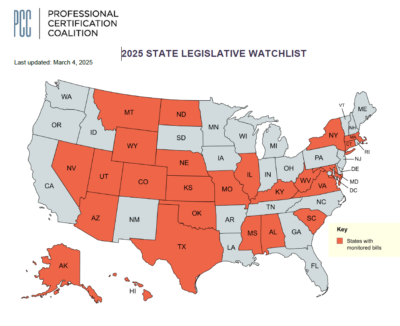
Congress / Legislation – Tomorrow’s Workforce Coalition
IHMM has launched lobbying efforts with our credential holders in Idaho and Oregon last week. Senator Mike Crapo [R-ID] and Senator Ron Wyden [D-OR] are on the Senate Finance Committee, and we are asking both to become co-sponsors of S 756, Invest in Tomorrow’s Workforce Act.
The Tomorrow’s Workforce Coalition, led by the American Society of Association Executives (ASAE), and the Professional Certification Coalition (PCC), and on which IHMM is a member of the TWC Steering Committee, recently surpassed 900 member organizations that represent more than 50 different industries across the country.
The Tomorrow’s Workforce Coalition supports the bipartisan, bicameral Freedom to Invest in Tomorrow’s Workforce Act (S. 756 / H.R. 1151), which would expand qualified expenses under 529 savings plans to include postsecondary training and credentialing, such as licenses and nongovernmental certifications; it would provide valuable tax-advantaged resources to more workers pursuing career growth, mid-career changes or alternative career pathways.
H.R. 1151 has 122 co-sponsors in the House. S 756 has 3 co-sponsors in the Senate. IHMM’s Executive Director Gene Guilford, CAE was on Capitol Hill in March working with the coalition on meeting with Members of Congress to co-sponsor the legislation.
H.R. 1151 / S 756 / Coalition Roster

IHMM Joins Community Impact Coalition in Washington
With Congress beginning to work on tax legislation in 2025, ASAE has launched the Community Impact Coalition — a unified initiative dedicated to educating the 119th Congress about the social and economic benefits of associations, charities, and other tax-exempt organizations. IHMM is a member of the Steering Committee of the Coalition.
The Community Impact Coalition is a national group of 99 organizations formed this year to represent the non-profit community in light of unprecedented attempts to find new sources of federal revenue to finance tax reform.
The Community Impact Coalition is committed to ensuring that lawmakers understand the value of 501(c) organizations and advocating against proposals that would eliminate their tax-exempt status. A wide range of trade associations, charities, and professional societies support the Community Impact Coalition, among them the Institute of Hazardous Materials Management [IHMM].

IHMM Joins ASAE Executive Steering Committee on Tax Reform in Washington
As Congress prepares to debate the expiration of the 2017 Tax Cuts and Jobs Act (TCJA), the tax-exempt sector faces a significant threat. Major think tanks have called for taxing 501(c) organizations, and with a $4.6 trillion tax cliff looming, lawmakers are increasingly scrutinizing the sector as a potential source of revenue. These are the initial ways to raise federal revenue identified by House Republicans on the Budget Committee. There will be more.
To combat this threat, the American Society of Association Executives [ASAE] is forming a coalition of tax-exempt organizations to take an aggressive stand against all proposals that would burden 501(c) organizations with increased taxation. ASAE is positioned to invest $1M in strategic advocacy and communications counsel.
The Threat
• Increased Scrutiny: Lawmakers are questioning the value of tax-exempt status and considering whether organizations should pay more in taxes.
• Revenue Proposals: Think tanks have proposed taxing all non-donation income and eliminating tax-exempt status. This includes membership fees, investment income, trade show income, and fees for service.
• Lack of Understanding: Many lawmakers are unfamiliar with the scope and impact of the tax-exempt sector and need additional education on its economic value to the U.S. economy.
The Need for Action
• Coordinated Effort: A united front is essential to protect the ASAE’s 50,000 association executives and their organizations that represent trade associations, professional societies, and industry partners from harmful legislation that constitutes the tax-exempt sector.
• Education and Advocacy: We must have an ongoing and strategic campaign to further educate lawmakers about the benefits of the sector and advocate for policies that support its mission.
The Institute of Hazardous Materials Management [IHMM] has voted to contribute $25,000 to this national coalition and to be a part of the ASAE Executive Steering Committee on behalf of all of IHMM’s certificates. Our voices in Washington are critically important, more than ever in 2025 as Congress begins debating new federal budget and tax measures. IHMM’s Executive Director Eugene A. Guilford, Jr., CAE already serves on the ASAE Advocacy Council and now on the ASAE Executive Steering Committee on Tax Reform.
Eugene A. Guilford, Jr., CAE worked for House Republican Leadership in 1981 and worked on passing President Reagan’s first tax cut legislation, and worked on his second 1986 tax bill as well. For other associations, he worked on tax legislation in 1993, 1997, 2001, 2010, 2012, and 2017.

Driving Business Growth and Profitability with Modern Occupational Environmental, Health and Safety Practices
IHMM is a member of the Intersociety Forum, made up of organizations dedicated to the EHS professions and to communicating with policy makers about the critically important role that the EHS professionals play in our world.
Modern occupational environmental, health, and safety (EHS) practices are key to driving economic growth. This document, developed by the Intersociety Forum (ISF), a coalition of organizations dedicated to safeguarding worker safety and health, highlights the many ways safety practices create a strategic advantage that powers enduring business success while fostering innovation and protecting workers.
Despite advancements, workplace injury and fatality rates remain stagnant. By adopting proactive, risk-based safety strategies, businesses can unlock greater productivity, reduce costs, and strengthen their global competitiveness. We urge today’s business leaders and policymakers to prioritize occupational EHS as a foundation of economic competitiveness. Adopting this approach will position the U.S. as a global leader in safety, innovation, and workforce well-being, enabling workers and businesses to thrive. Driving Business Growth and Profitability.
Here is the “Driving Business Growth and Profitability Through Modern Occupational Environmental, Health and Safety Practices” document.
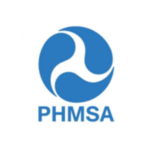
NPRM: Advancing Safety of Highway, Rail, and Vessel Transportation
Deadline: April 28, 2025
On October 28, HM-265 Notice of Proposed Rulemaking (NPRM) titled “Hazardous Materials: Advancing Safety of Highway, Rail, and Vessel Transportation” was published to the Federal Register. This NPRM proposes amendments to improve the safety and efficiency of hazardous materials transported by highway, rail, and vessel, as well as several amendments for all modes of transportation. Specifically, some of the proposed amendments include:
• Adopting the 2017 Rail Safety Advisory Committee Hazardous Materials Issues Working Group recommendations
• Removing the delegation to the Association of American Railroads as the sole source for tank car design approvals and tank car facility quality assurance program approvals
• Revising the UN ID number marking requirements for motor carriers who transport different types of petroleum distillate fuels (e.g., gasoline and diesel fuel) in multiple trips in the same day
• Updating cargo tank manufacture and inspection requirements to address safety deficiencies noted during inspections
• Removing the requirement for security awareness training for hazmat employees who manufacture packagings and do not come into contact with hazardous materials in transport.
As with any NPRM, PHMSA needs your input! We’ve extended the comment period, meaning that all comments must be received by April 28, 2025.
Notice to Public Safety Answering Points (PSAP, e.g., 9-1-1 call centers)
Starting on June 24, 2025, the six Class I railroads are required to begin complying with the requirements of the HM-263 Real-Time Train Consist Information final rule.
This rule requires that, for any accident involving a train transporting hazardous material, or any incident involving the release or suspected release of hazardous materials from a car on a train, railroads must make a telephone call to the primary Public Safety Answering Point (PSAP) informing them of the incident or accident. Then, the railroad must transmit train consist information directly to the primary PSAP, in a form that the PSAP is able to receive and use.
Train consist information includes:
- The railroad’s designated emergency response point of contact (including contact phone number)
- the position in the train and contents of each hazardous material rail car, listed by reporting mark and number
- The point of origin and destination of the train
- Shipping paper information (e.g., UN ID number, proper shipping name, hazard class, packing group, technical name (if applicable), number and type of packages
- Emergency response information required by § 172.602(a) of this subchapter.
This information is critical for first responders to protect themselves and their communities during the initial stages of a response to a train accident or incident involving hazardous materials.

IHMM Federal Issues – Completed Actions
In this section you will find the federal issues on which IHMM has interests and are completed actions.

EPA Extends Comment Periods For Notices Concerning PFAS
Deadline: April 16 and 25, 2025
On February 21, 2025, EPA extended the comment period on the following notices:
- Draft National Recommended Ambient Water Quality Criteria for the Protection of Human Health for Perfluorooctanoic Acid, Perfluorooctane Sulfonic Acid, and Perfluorobutane Sulfonic Acid, 89 Fed. Reg. 105041. EPA announced the availability of draft Clean Water Act (CWA) national recommended ambient water quality criteria (AWQC) for the protection of human health for three PFAS for a 60-day public comment period. EPA states that it developed these draft PFAS national recommended human health criteria (HHC) to reflect the latest scientific information, consistent with current EPA guidance, methods, and longstanding practice. Comments are due April 25, 2025.
- Draft Sewage Sludge Risk Assessment for Perfluorooctanoic Acid (PFOA) and Perfluorooctane Sulfonic Acid (PFOS), 90 Fed. Reg. 3859. As reported in our January 14, 2025, according to EPA, the findings show that there may be human health risks associated with exposure to PFOA or PFOS with all three methods of using or disposing of sewage sludge — land application of biosolids, surface disposal in landfills, or incineration. Comments are due April 16, 2025.

EPA Reopens Comment Period On Proposed Risk Management Rule For PV29
Deadline: April 29, 2025
On March 4, 2025, EPA announced that it is reopening the comment period for the January 2025 proposed rule to address the unreasonable risk of injury to human health presented by the Color Index (C.I.) Pigment Violet 29 (PV29) under its conditions of use (COU) as documented in EPA’s January 2021 risk evaluation and September 2022 revised risk determination.

EPA Releases Draft Scope Document for Vinyl Chloride TSCA Risk Evaluation
Deadline: March 3, 2025
On January 16, 2025, the U.S. Environmental Protection Agency (EPA) announced the availability of and requested public comment on the draft scope of the risk evaluation to be conducted under the Toxic Substances Control Act (TSCA) for vinyl chloride. 90 Fed. Reg. 4738. EPA notes that under TSCA, the scope documents must include the conditions of use (COU), hazards, exposures, and the potentially exposed or susceptible subpopulations (PESS) that EPA expects to consider in conducting its risk evaluation. EPA states that the purpose of risk evaluations under TSCA is to determine whether a chemical substance presents an unreasonable risk of injury to health or the environment under the COUs, including unreasonable risk to PESS identified as relevant to the risk evaluation by EPA, and without consideration of costs or non-risk factors. Comments are due March 3, 2025. For more information, please read our full memorandum.

EPA Proposes Risk Management Rule to Protect Workers from Inhalation Exposure to PV29
Deadline: February 28, 2025
On January 14, 2025, the U.S. Environmental Protection Agency (EPA) issued a proposed rule to address the unreasonable risk of injury to human health presented by Color Index (C.I.) Pigment Violet 29 (PV29) under its conditions of use (COU) as documented in EPA’s January 2021 risk evaluation and September 2022 revised risk determination. 90 Fed. Reg. 3107. The proposed rule states that the Toxic Substances Control Act (TSCA) requires that EPA address by rule any unreasonable risk of injury to health or the environment identified in a TSCA risk evaluation and apply requirements to the extent necessary so the chemical no longer presents unreasonable risk. To address the identified unreasonable risk, EPA proposes requirements to protect workers during manufacturing and processing, certain industrial and commercial uses of PV29, and disposal, while also allowing for a reasonable transition period prior to enforcement of said requirements. Comments are due February 28, 2025. EPA notes that under the Paperwork Reduction Act (PRA), comments on the information collection provisions are best assured of consideration if the Office of Management and Budget (OMB) receives comments on or before February 13, 2025. For more information, please read our full memorandum.

Agency Information Collection Activities; Submission for OMB Review; Comment Request; Methylene Chloride Standard
Deadline: December 13, 2024
The agency published an ICR related to its Methylene Chloride standard. This chemical is hazardous but widely used in industry, so OSHA closely monitors safety standards. The regulation of methylene chloride, also known as dichloromethane (DCM), is primarily governed by the U.S. Environmental Protection Agency (EPA) under the Toxic Substances Control Act (TSCA).
- U.S. Environmental Protection Agency (EPA). (2024). .
- U.S. Environmental Protection Agency (EPA). (2024). .
- U.S. Environmental Protection Agency (EPA). (2024). .
These regulations aim to protect public health and the environment by reducing exposure to this hazardous chemical.
IHMM Comments Filed 12-13-2024

PHMSA NPRM on HMR
Deadline: January 27, 2025
The agency published a new proposed rule (NPRM) that if adopted will modify certain provisions of the HMR related particularly to modal-specific requirements. The following are, according to PHMSA, some of the more important topics that feature proposed revisions:
• Rail tank car use requirements as recommended by the Rail Safety Advisory Committee (RSAC)
• Rail tank car and service equipment design approval requirements
• Highway cargo tank specifications and requalification requirements
• Marking requirements for cargo tanks that contain multiple petroleum distillate fuels.
Comments will be due no later than January 27th, 2025. See the details of this NPRM and find out how to comment here.

Canada Begins Public Consultations on Initiatives Supporting CEPA Amendments
Deadline: December 4, 2024
On October 5, 2024, Canada released three significant documents that move it closer to implementing the 2023 amendments to the Canadian Environmental Protection Act, 1999 (CEPA). The 2023 legislation, Strengthening Environmental Protection for a Healthier Canada Act (Bill S-5), requires that decisions made under CEPA respect the right to a healthy environment. Canada has released a draft implementation framework setting out how the Minister of the Environment and the Minister of Health (the ministers) will consider the right in administering CEPA.

DOT Publishes Notice of Proposed Rulemaking for Electronic Signatures, Forms and Storage for Drug and Alcohol Testing Records
Deadline: December 16, 2024
Today, October 15, 2024, the Department of Transportation (DOT) published a notice of proposed rulemaking (NPRM) in the Federal Register proposing to amend its regulations for conducting workplace drug and alcohol testing for the federally regulated transportation industry to allow, but not require, electronic signatures on documents required to be created and utilized under the regulations, the use of electronic versions of forms, and the electronic storage of forms and data.
The regulatory changes would apply to DOT-regulated employers and their contractors (“service agents”) who administer their DOT-regulated drug and alcohol testing programs. Currently, employers and their service agents must use, sign and store paper documents exclusively, unless the employer is utilizing a laboratory’s electronic Federal Drug Testing Custody and Control Form system that has been approved by the Department of Health and Human Services. DOT is required by statute to amend its regulations to authorize, to the extent practicable, the use of electronic signatures or digital signatures executed to electronic forms instead of traditional handwritten signatures executed on paper forms.

Addition of Certain Per- and Polyfluoroalkyl Substances (PFAS) to the Toxics Release Inventory (TRI)
Deadline: December 9, 2024
The Environmental Protection Agency (EPA) is proposing to add 16 individually listed per- and polyfluoroalkyl substances (PFAS) and 15 PFAS categories to the Toxics Release Inventory (TRI) list of toxic chemicals subject to reporting under the Emergency Planning and Community Right-to-Know Act and the Pollution Prevention Act. EPA also addresses how PFAS categories should be treated and discusses what events may trigger the automatic addition of a PFAS to the TRI. Comments due December 9.
The Environmental Protection Agency (EPA) is proposing to add 16 individually listed per- and polyfluoroalkyl substances (PFAS) and 15 PFAS categories to the Toxics Release Inventory (TRI) list of toxic chemicals subject to reporting under the Emergency Planning and Community Right-to-Know Act (EPCRA) and the Pollution Prevention Act (PPA) to comply with the National Defense Authorization Act for Fiscal Year 2020 (NDAA). EPA also addresses how PFAS categories should be treated. Separately, EPA discusses what events may trigger the automatic addition of a PFAS to the TRI pursuant to the NDAA. This discussion does not propose to list chemicals to TRI pursuant to the NDAA, but rather describes what EPA documents and activities involving PFAS would trigger an automatic addition under the NDAA.
DATES:
Comments must be received on or before December 9, 2024. Comments on the information collection provisions submitted to the Office of Management and Budget (OMB) under the Paperwork Reduction Act (PRA) are best assured of consideration by OMB if OMB receives a copy of your comments on or before November 7, 2024.
ADDRESSES:
Submit your comments, identified by docket identification (ID) number EPA-HQ-OPPT-2023-0538, through https://www.regulations.gov. Follow the online instructions for submitting comments. Do not submit electronically any information you consider to be Confidential Business Information (CBI) or other information whose disclosure is restricted by statute. Additional instructions on commenting or visiting the docket, along with more information about dockets generally, is available at https://www.epa.gov/dockets.

EPA Seeks Public Comment on Manufacture of Certain PFAS during Fluorination of HDPE and Other Plastic Containers
Deadline: November 29, 2024
On September 30, 2024, the U.S. Environmental Protection Agency (EPA) requested public comment on the manufacture of certain per- and polyfluoroalkyl substances (PFAS), including perfluorooctanoic acid (PFOA), perfluorononanoic acid (PFNA), and perfluorodecanoic acid (PFDA), during the fluorination of high-density polyethylene (HDPE) and other plastic containers to inform regulations as appropriate under the Toxic Substances Control Act (TSCA). 89 Fed. Reg. 79581. EPA notes that this request for comment follows its grant on July 10, 2024, of a TSCA Section 21 petition requesting that EPA establish regulations under TSCA Section 6 prohibiting the manufacturing, processing, use, distribution in commerce, and disposal of PFOA, PFNA, and PFDA formed during the fluorination of plastic containers. Comments are due November 29, 2024. This is a unique situation because it is unclear whether EPA has the authority under TSCA Section 6 to move straight to rulemaking, given the available fact set. For more information and our insightful Commentary, please read the full memorandum.

OSHA Emergency Response Standard Hearing
Public Hearing November 12, 2024
The Occupational Safety and Health Administration (OSHA) issued a notice scheduling an informal public hearing on its proposed rule ‘‘Emergency Response Standard’’ mentioned in the email below.… Read More

EPA Begins 90-Day Comment Period on Proposed High-Priority Substance Designations for Five Chemicals
Deadline: October 23, 2024
| The U.S. Environmental Protection Agency (EPA) announced on July 25, 2024, that it is proposing to designate acetaldehyde, acrylonitrile, benzenamine, vinyl chloride, and 4,4-methylene bis(2-chloroaniline) (MBOCA) as high-priority substances… Read More |

IHMM Signs Letter Opposing Reductions in OSH Worker’s Pay
The IHMM Government Affairs Committee has agreed to sign a coalition letter opposing reductions in pay for IH and OSH employees.
Why IHMM Is Interested in This Act – Protecting CSHMs, CSMPs, and ASHMs in government
As the attached letter states, part of the concern and reason we signed onto this letter is that “if VA’s proposed pay downgrade moves forward, it could inspire other agencies to reduce the pay of industrial hygienists and other occupational and environmental health and safety workers they employ. The likely result of such a scenario would be a weakening of the entire Federal government’s ability to protect workers and their communities from health and safety hazards, as it will likely take longer and become harder to find and hire employees for these critical positions; this action runs counter to the intended outcomes of the consistency review process.”
Useful Resource
Here’s a link to a Federal News Network article about the VA’s proposal: https://federalnewsnetwork.com/pay/2024/04/va-reviewing-4000-employee-positions-at-risk-of-downgrade-in-pay-scale/

EPA Publishes Compliance Guide for Final Methylene Chloride Risk Management Rule
On July 10, 2024, the U.S. Environmental Protection Agency (EPA) published a compliance guide for its final methylene chloride risk management rule… Read More

Hazardous Materials: Notice of Applications for New Special Permits
In accordance with the procedures governing the application for, and the processing of, special permits from the Department of Transportation’s Hazardous Material Regulations, notice is hereby given that the Office of Hazardous Materials Safety has received the application described herein… Read More

Attention Transporters of Hazardous Materials: PHMSA Proposes Registration Fee Updates
In order to account for increased transport of hazardous materials as well as the burdens such transport places on first responders, PHMSA proposes overdue updates to the registration fees… Read More

National Emission Standards for Hazardous Air Pollutants From Hazardous Waste Combustors Malfunction and Electronic Reporting Amendments
Deadline: September 9, 2024
The Environmental Protection Agency (EPA) is proposing to amend the National Emission Standards for Hazardous Air Pollutants (NESHAP) from Hazardous Waste Combustors (HWC) to remove the exemptions and revise other provisions associated with emission standard exemptions… Read More

Hazardous Materials: Harmonization With International Standards – IHMM Comments Filed 7/31/2023
PHMSA proposes to amend the Hazardous Materials Regulations to maintain alignment with international regulations and standards by adopting various amendments, including changes to proper shipping names, hazard classes, packing groups, special provisions, packaging authorizations, air transport quantity limitations, and vessel stowage requirements.
FR Citation: 88 FR 34568
Published 5/30 comments by 7/31
Docket No. PHMSA-2021-0092 (HM-215Q)
Read IHMM’s Comments on this proposed rule here.

PHMSA Seeks Comment on Initiatives to Modernize the HMR
On July 5, 2023, the Pipeline and Hazardous Materials Safety Administration (PHMSA) published an advance notice of proposed rulemaking (ANPRM) to solicit stakeholder feedback on initiatives PHMSA is considering that may modernize the Hazardous Materials Regulations (HMR) and improve efficiencies while maintaining or improving a current high level of safety. 88 Fed. Reg. 43016. To engage fully with stakeholders, the ANPRM solicits comments and input on questions related to 46 distinct topics under consideration. PHMSA states that it will use any comments, data, and information received “to evaluate and potentially draft proposed amendments.”
Comments are due October 3, 2023. PHMSA notes that it “will consider late-filed comments to the extent possible.” This memorandum provides more information on several of the topics under consideration: non-bulk packaging, intermediate bulk container (IBC), and large packaging periodic retest extension; aerosol classification alignment; requirements for damaged, defective, or recalled lithium cells and batteries; and 49 C.F.R. Section 173.150 ethyl alcohol exception. It includes highlights of PHMSA’s questions on these topics. Stakeholders should review the notice for the complete list of questions as well as the other topics addressed by the notice. For more information, please read the full memorandum.
Read more >> https://www.lawbc.com/regulatory-developments/entry/phmsa-seeks-comment-on-initiatives-to-modernize-the-hmr

More Federal Recognition for the CSHM, CSMP, CHMM, and CHMP – IHMM Comments to OSHA Voluntary Protection Program [VPP]
OSHA’s Voluntary Protection Programs (VPP) was initiated in 1982 to recognize workplaces with exceptional safety and health management. VPP was groundbreaking, being among the first programs to employ a management system structure emphasizing management leadership, worker participation, robust hazard identification and control, and training. In the intervening 40+ years, the program has grown to include a wide variety of organizations in many industries. Much has been learned about safety and health management since the VPP requirements were last updated in 1989. OSHA published its Recommended Practices for Safety and Health Programs in 2016 and consensus standards have been published at both the national (ANSI Z10-2019) and international level (ISO 45001-2018).
OSHA is seeking public input as it considers updating its Voluntary Protection Program (VPP); to expand participation and increase Safety and Health Management System (SHMS) adoption.
IHMM has drafted comments for the OSHA VPP proceeding, focused on the CSHM, CSMP, CHMM, and CHMP, which we intend on submitting by the end of May. If you have any comments on the IHMM submission please send them to Gene Guilford at [email protected]
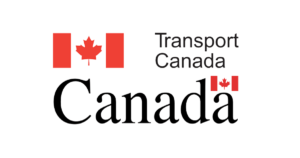
Transport Canada Has Begun Rolling Out Its ‘TDG Online’ Platform
Transport Canada has begun rolling out its ‘TDG Online’ platform, which will act as a web portal for everything to do with the transport of dangerous goods… Read More

U.S. Army Corps of Engineers Recognizes IHMM CSHM
The U.S. Army Corps of Engineers (USACE) Safety and Health Requirements Manual (EM 385-1-1) is the gold standard for Safety and Occupational Health regulations. The manual holds a long history dating back to 1941 and is designed to facilitate the standardization of all safety programs. The EM 385-1-1 prescribes the safety and health requirements for all Corps of Engineers activities and operations. The USACE is soliciting comments on the proposed revisions to EM 385-1-1. USACE intends to update the manual and periodically thereafter, to reflect such public input, experience, and innovation. The agency will address significant comments received in the next revision of this manual.
USACE EM 385-1-1 is undergoing revisions and recognizes the IHMM Certified Safety and Health Manager [CSHM] credential.
IHMM is submitting comments to the proposed revisions to the EM 385-1-1 to also include the CSMP and CHMM credentials. Comments are due by June 13, 2022 and you will find IHMM’s comments here.

U.S. Small Business Administration Recognizes the IHMM CHMM
SBA’s environmental policies and procedures apply to all SBA Lenders on all 7(a) and 504 loan programs, except where otherwise indicated. For 7(a) loans, failure to comply with the provisions of this paragraph may result in a denial of SBA’s guaranty. Prudent lending practices may dictate additional Environmental Investigations or safeguards. These policies are embodied in SBA SOP 50 10 6, Lender and Development Company Loan Program.
Appendix 4 of the SBA SOP requires that an “Environmental Professional,” as defined by 40 CFR §312.10, perform the Phase 1 or Phase II environmental assessments that may be required prior to closing an SBA-backed loan.
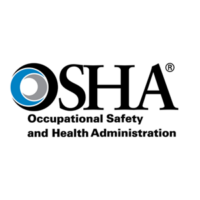
OSHA Seeks Feedback on Effectiveness of Leading Indicators to Improve, Develop Resource Tool
The U.S. Department of Labor’s Occupational Safety and Health Administration is asking for stakeholder input on their current use of leading indicators and their impact on managing their safety and health management systems. Leading indicators are proactive and preventive measures that can provide insight on the effectiveness of safety and health activities and reveal potential problems. They are vital in reducing worker fatalities, injuries, illnesses, and financial impacts.
As OSHA considers developing a Leading Indicators Resource, the agency welcomes stakeholders to share their experience and expertise and provide detailed feedback on how/where they are used at their workplace. OSHA is interested in various perspectives on stakeholders’ answers to questions, such as the following:
- What leading indicators do you use?
- What lagging indicators do you use (OSHA incident rates, for example)?
- What leading indicators are, or could be, commonly used in your industry?
- What metrics do you share with top management?
- How do you determine the effectiveness of your leading indicators?
- Do you link your leading indicators to outcome data, such as OSHA incident rates to evaluate results?
- How could employers be encouraged to use leading indicators in addition to lagging indicators to improve safety management systems?
- What barriers and challenges, if any, have you encountered to using leading indicators?
Individuals may submit comments at regulations.gov by July 17, 2023, which is the Federal eRulemaking Portal, identified by docket number OSHA-2023-0006. For more information, see the OSHA Trade Release.

PHMSA Requests Feedback on Recycled Plastics Policy
On April 14, 2023, the Department of Transportation’s (DOT) Pipeline and Hazardous Materials Safety Administration (PHMSA) published a request for feedback on its recycled plastics policy. 88 Fed. Reg. 23140. PHMSA states that it published the notice to solicit information pertaining to how the potential use of recycled plastic resins in the manufacturing of specification packagings may affect hazardous materials transportation safety; ensure transparency of its current policy pertaining to the use of recycled plastics in the manufacturing of specification packagings; seek input on this policy to inform better potential regulatory changes; and gather information for the evaluation of future approval requests and to inform better decisions pertaining to potential regulatory revisions and other related work. Comments are due July 13, 2023. PHMSA notes that in conjunction with the notice, it is considering conducting a webinar to inform the public of its recycled plastics policy if there is sufficient feedback. PHMSA will post information regarding any future webinars on its website. For more information, please read the full memorandum.
Read more >> https://www.lawbc.com/regulatory-developments/entry/phmsa-requests-feedback-on-recycled-plastics-policy

- IHMM submitted comments on OSHA Advisory Committee on Construction Safety and Health (ACCSH): Notice of Meetings concerning OSHA-2024-0002-0007, and highlighted the creation of IHMM’s Certified Pandemic Preparedness Specialist [CPPS] credential.

- The Occupational Safety and Health Administration has a number of courses in occupational safety and health within which OSHA credits “A degree in occupational safety and health, a Certified Safety Professional (CSP) or a Certified Industrial Hygienist (CIH) designation.” IHMM proposed including the CHMM, CSHM, and CSMP.
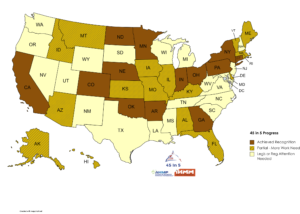
IHMM State Issues – Pending and Completed Actions
In this section you will find the state issues on which IHMM has interests and are pending or completed actions.
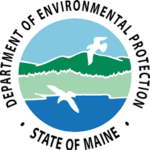
Maine Seeks Comments on Concept Draft Language for PFAS in Products Rule |
The Maine Department of Environmental Protection (MDEP) announced on August 5, 2024, that its Per- and Polyfluoroalkyl Substances (PFAS) in Products Program has developed new concept draft language to implement the recently amended Title 38, Section 1614, the section addressing PFAS in products. MDEP has made the concept draft language available for an informal outreach process until August 30, 2024. Read More

- State of Maine Department of Environmental Protection is proposing to update Chapter 851, Standards for Generators of Hazardous Waste. In the current regulation work is required by a professional engineer. IHMM is proposing to include an environmental professional as defined by 40 CFR §312.10.
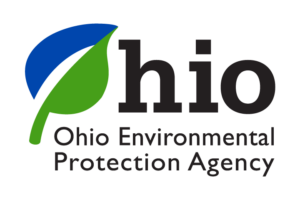
Ohio EPA – Hazardous Waste Program Proposed Rules
May 3, 2023 – 10.30 am – 11.00 am
Organic Air Emissions and Definition of Solid Waste Rules: On March 27, 2023, the director of Ohio Environmental Protection Agency, under the authority of Section 119.03 of the Ohio Revised Code and in accordance with Chapter 119, proposed to original file 173 rules as a part of the Organic Air Emissions and Definition of Solid Waste (OrgAirDSW) rules package. A public hearing on this proposed rulemaking will be held in-person on Wednesday, May 3, 2023, at 50 W. Town Street, Suite 700, Conference Room A (Autumn), at 10:30am.
The hearing will also be held virtually at the same date and time. Advance registration for this hearing may be completed here:
https://attendee.gotowebinar.com/register/5706686780059016797
Any persons intending to give public testimony at said hearing should notify the Ohio EPA Public Interest Center [P.O. Box 1049, Columbus, Ohio 43216-1049, (614) 644-2160]. Written testimony may be either be submitted ahead of the hearing to the below address, electronically to Kit Arthur or Madison Graham, or to the Hearing Officer at the public hearing.
Read more >> https://epa.ohio.gov/about/media-center/events/public-hearing-HazWasteRules
IHMM thanks our friends at Central Ohio CHMM (COCHMM) for sending this to us.
IHMM Credential Recognition
The highest priority of IHMM’s Government Affairs Committee is the recognition of IHMM’s credentials by government. We have made substantial progress in the two years we have undertaken this endeavor, as outlined in detail here > https://ihmm.org/credential-recognition/
In this project we have 45-in-5, increasing the number of states that recognize IHMM credentials.
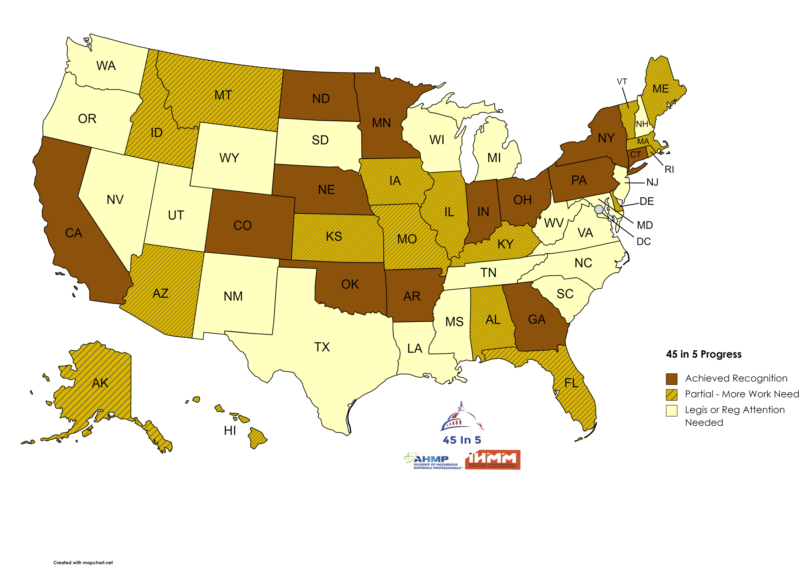
- We have already succeeded in 13 states – New York, Connecticut, Pennsylvania, Indiana, California, Colorado, Nebraska, Minnesota, Arkansas, Oklahoma. Ohio, North Dakota, and Georgia. [Red states in the map above]. These are states where IHMM credentials are cited or 40 CFR 312.10 is cited by reference.
- We have partially succeeded in another 16 states – Alaska, Hawaii, Idaho, Montana, Arizona, Kansas, Iowa, Missouri, Illinois, Kentucky, Florida, Delaware, Rhode Island, Massachusetts, Vermont, and Maine. [Orange/Black Stripe states in the map above] These are states where the requirements of an “environmental professional” or QEP are cited that coincide with an IHMM credential so that relatively little work would need to be done to clarify the desired outcome.
- We have 21 states where no reference to an IHMM credential is made in either statute or regulation, nor is there anything defined in the area of an environmental professional. These states will require legislation or regulatory work. [Yellow states in the map above].
in January 2022 Gene Guilford released the 40 CFR § 312.10 EPA regulation that states a private certification that meets or exceeds the requirements of the regulation is an Environmental Professional under the regulation. Here is the crosswalk between the 40 CFR § 312.10 EPA regulation and the Certified Hazardous Materials Manager [CHMM] blueprint. The CHMM meets or exceeds the requirements of an Environmental Professional.
Here’s what we ask each volunteer to do:
- Watch legislative and regulatory developments in your state that provide an opportunity for us to create amendments or other interventions
- Be willing to speak with regulators and legislators in your area about the recognition efforts we craft together
Other State and Federal Activities – Accomplishments for 2024
In this section we will highlight other state and federal government affairs activities undertaken by the committee.
Professional Certification Coalition, 2023 Accomplishments and 2024 Priorities
More Federal Recognition for the CSHM, CSMP, CHMM, and CHMP – IHMM Comments to OSHA Voluntary Protection Program [VPP]
Hazardous Materials: Harmonization With International Standards – IHMM Comments Filed 7/31/2023
PHMSA Seeks Comment on Initiatives to Modernize the HMR
PHMSA – Hazardous Materials: Harmonization With International Standards – IHMM Comments Submitted – Docket No. PHMSA-2021-0092 (HM-215Q)
NY Department of Labor rulemaking concerning the recognition of the CSHM and CSMP. IHMM’s comments concerning initiating this rulemaking are here
Work with Eric Vega in Puerto Rico concerning credential recognition
Review of the Governor of Nevada’s Executive Order concerning licensing boards and potential for recognition of the CHMM. IHMM’s comments on the Governor’s Executive Order are here
Scheduling meetings with the Maryland Congressional delegation concerning the Certified Pandemic Preparedness Specialist [CPPS] credential
PHMSA Recycled Plastics Policy – https://www.federalregister.gov/documents/2023/04/14/2023-07869/hazardous-materials-request-for-feedback-on-recycled-plastics-policy
Ohio EPA Hazardous Waste Rules – https://epa.ohio.gov/about/media-center/events/public-hearing-HazWasteRules
OSHA, finding the personnel who make the decisions concerning credentials recognized as prerequisites for OSHA training programs
Maine DEP, update Chapter 851, Standards for Generators of Hazardous Waste. In the current regulation work is required by a professional engineer. IHMM is proposing to include an environmental professional as defined by 40 CFR §312.10.


